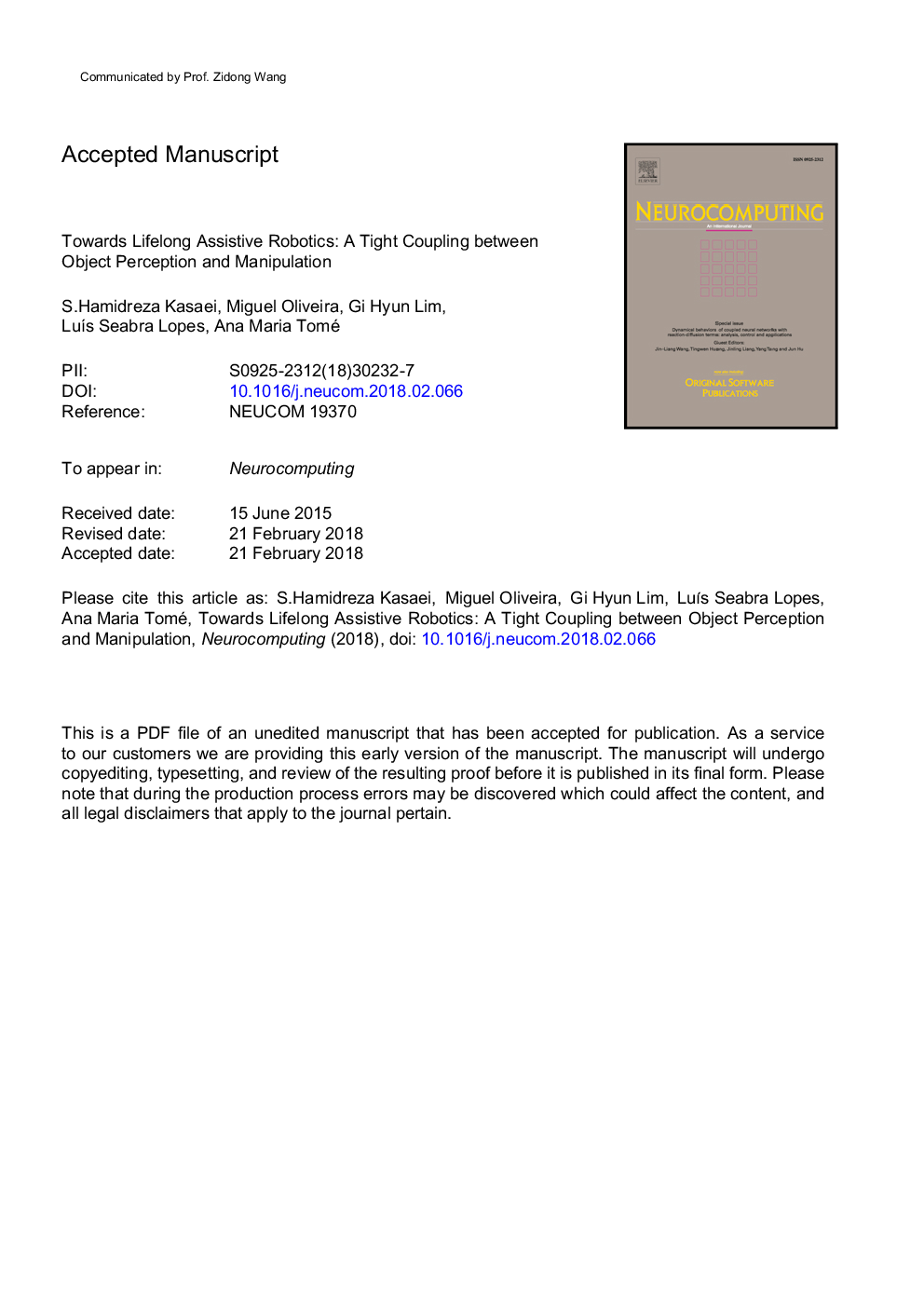| Article ID | Journal | Published Year | Pages | File Type |
|---|---|---|---|---|
| 6864195 | Neurocomputing | 2018 | 52 Pages |
Abstract
This paper presents an artificial cognitive system tightly integrating object perception and manipulation for assistive robotics. This is necessary for assistive robots, not only to perform manipulation tasks in a reasonable amount of time and in an appropriate manner, but also to robustly adapt to new environments by handling new objects. In particular, this system includes perception capabilities that allow robots to incrementally learn object categories from the set of accumulated experiences and reason about how to perform complex tasks. To achieve these goals, it is critical to detect, track and recognize objects in the environment as well as to conceptualize experiences and learn novel object categories in an open-ended manner, based on human-robot interaction. Interaction capabilities were developed to enable human users to teach new object categories and instruct the robot to perform complex tasks. A naive Bayes learning approach with a Bag-of-Words object representation are used to acquire and refine object category models. Perceptual memory is used to store object experiences, feature dictionary and object category models. Working memory is employed to support communication purposes between the different modules of the architecture. A reactive planning approach is used to carry out complex tasks. To examine the performance of the proposed architecture, a quantitative evaluation and a qualitative analysis are carried out. Experimental results show that the proposed system is able to interact with human users, learn new object categories over time, as well as perform complex tasks.
Related Topics
Physical Sciences and Engineering
Computer Science
Artificial Intelligence
Authors
S. Hamidreza Kasaei, Miguel Oliveira, Gi Hyun Lim, LuÃs Seabra Lopes, Ana Maria Tomé,
